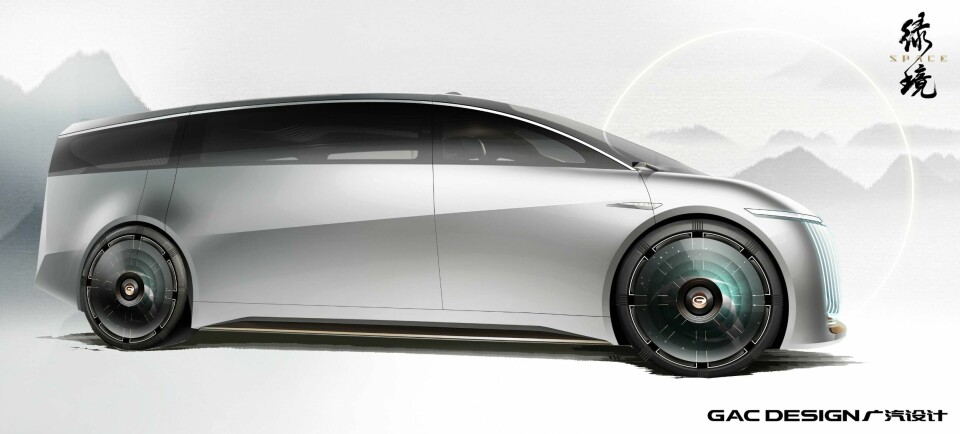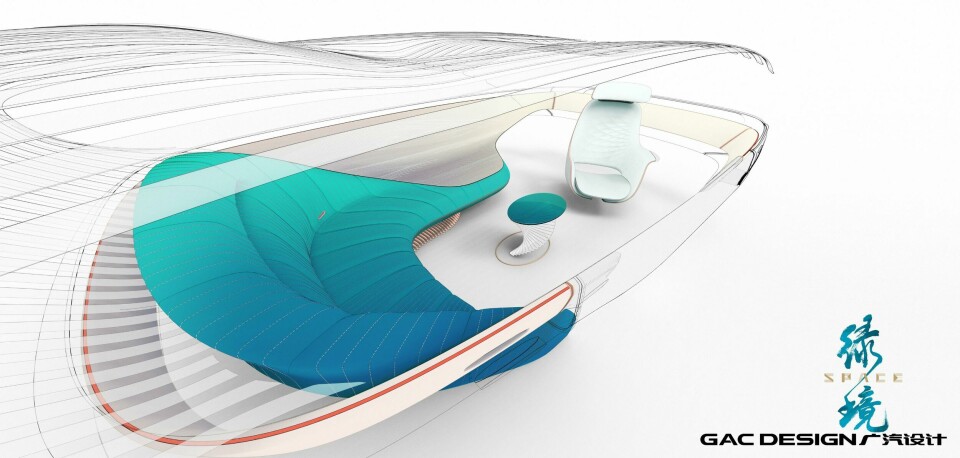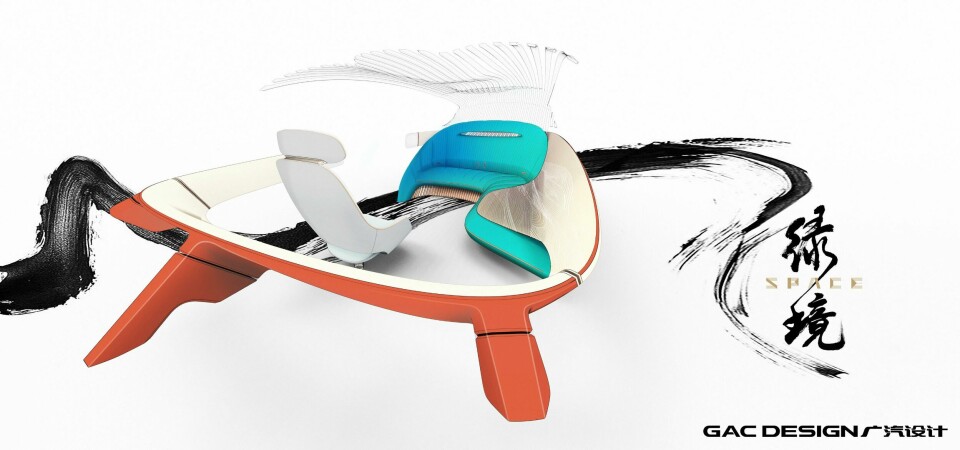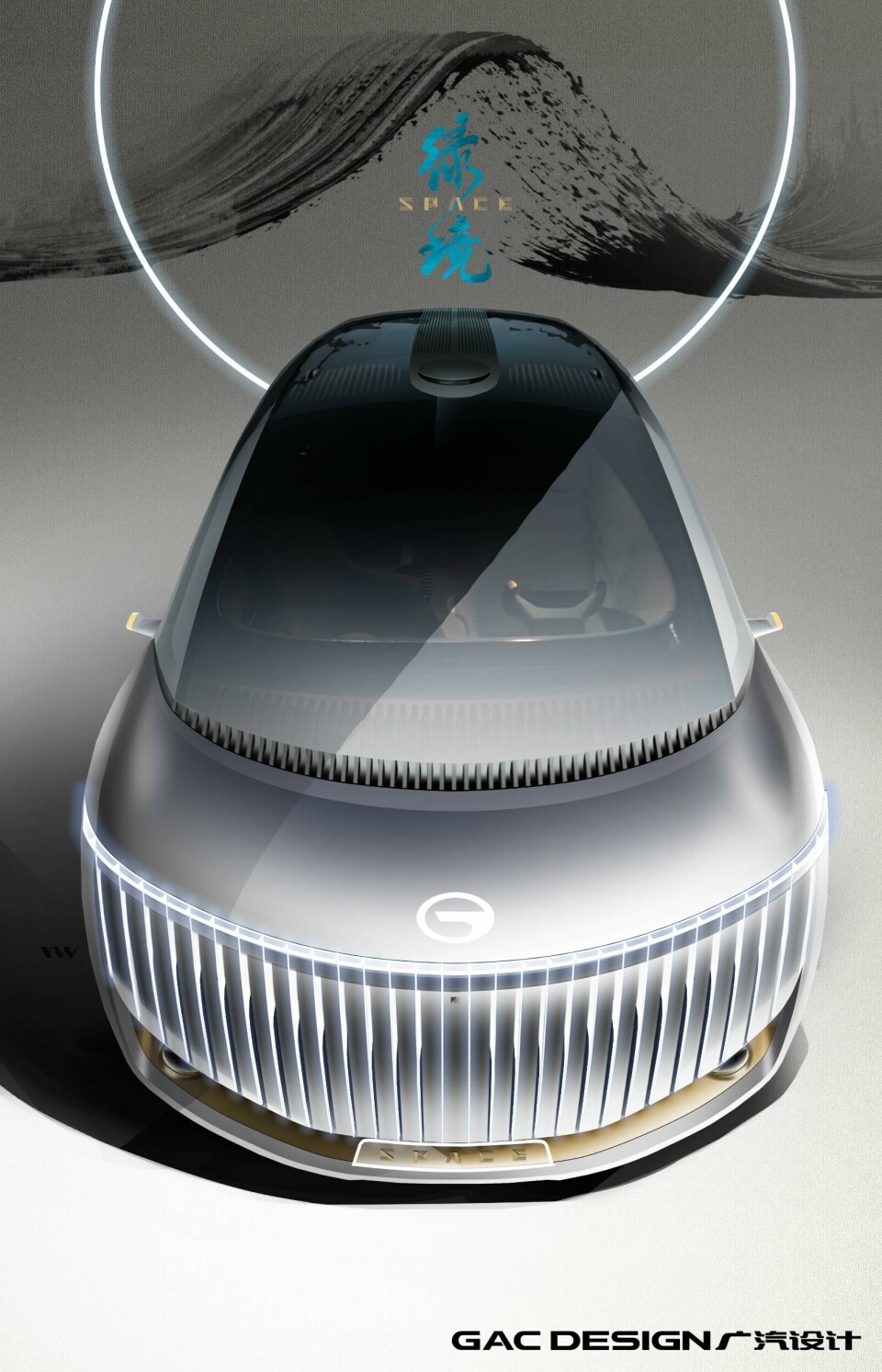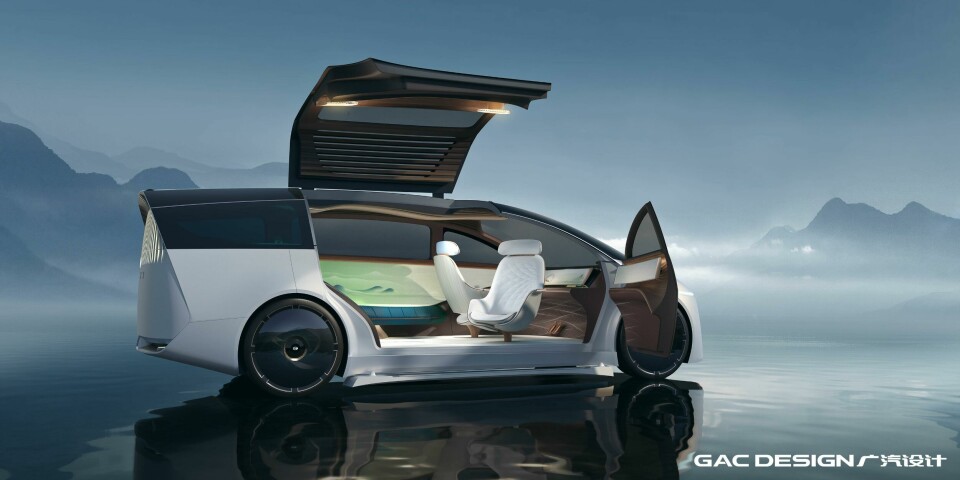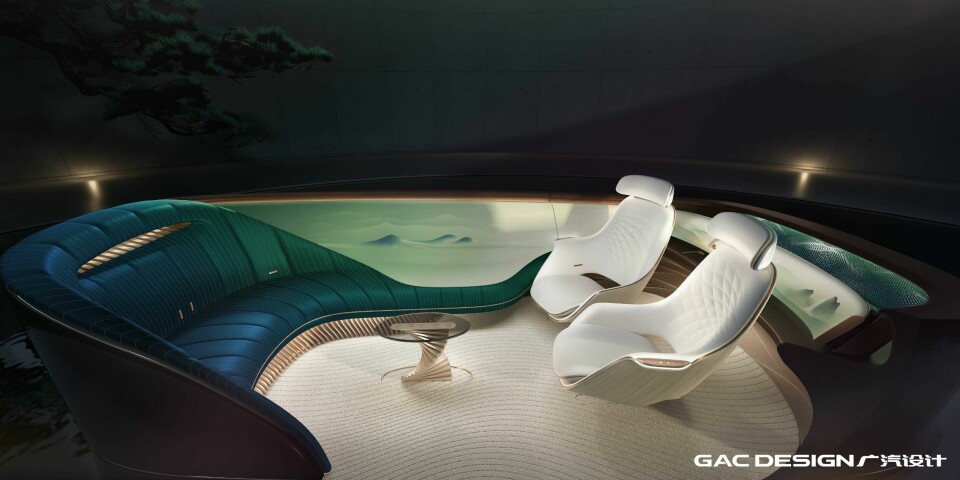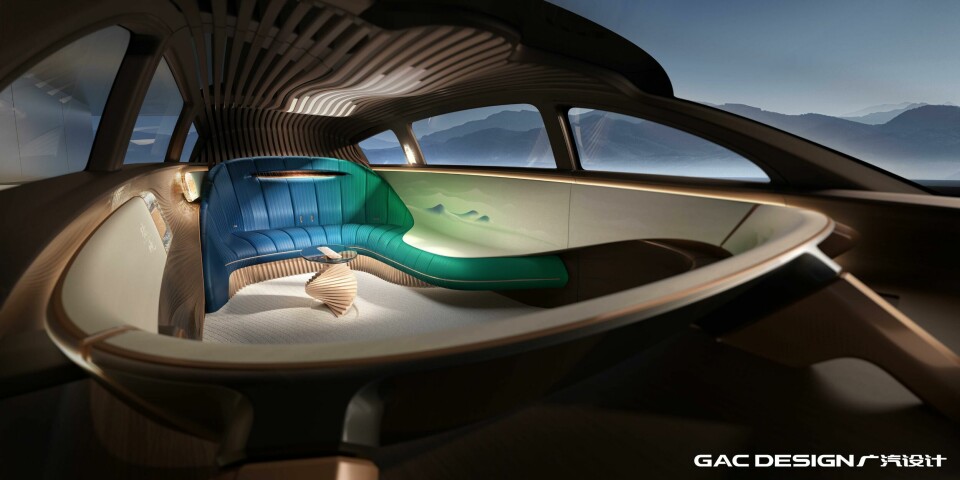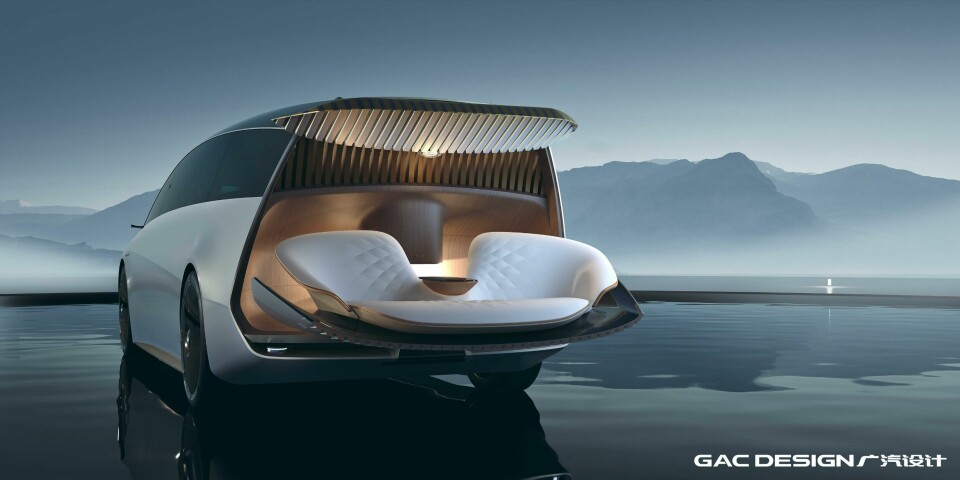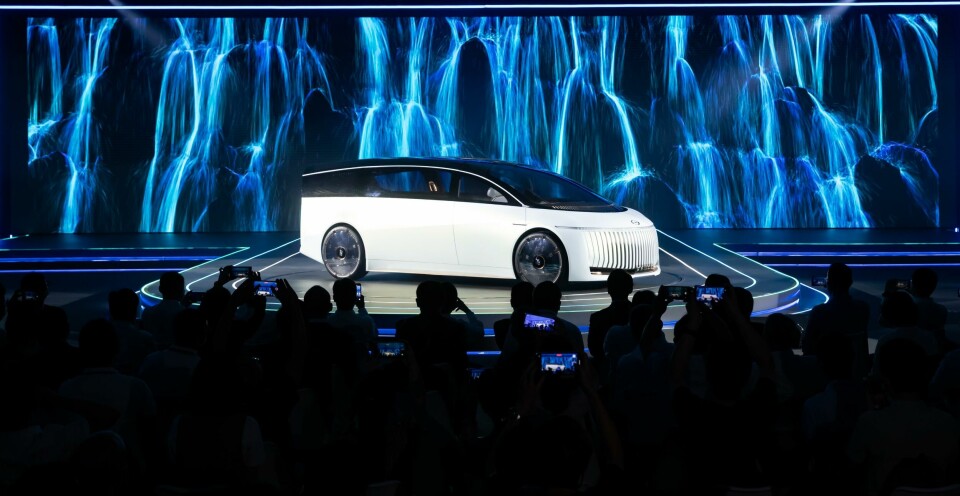
GAC reveals futuristic people carrier concept
A minimalist exterior hides a spacious boho interior that has been heavily inspired by Chinese culture. Car Design News digs deeper into GAC’s new Space Concept and speaks with design head Fan Zhang
GAC says its new hydrogen-powered concept car balances “practicality and emotionality.” That ideology has materialised in a stretched-out people carrier with an interior that channels traditional Chinese architecture and ancient landmarks.
For a concept car, it is not as radical as some. The silhouette is vaguely reminiscent of a Chrysler Pacifica minivan at first glance. But looks can be deceiving. That people-carrier body is positioned more for serene long-distance jaunts than it is the school run. On closer inspection, there are some clever approaches – particularly to the front and rear – that make clear this is a vision for the future.
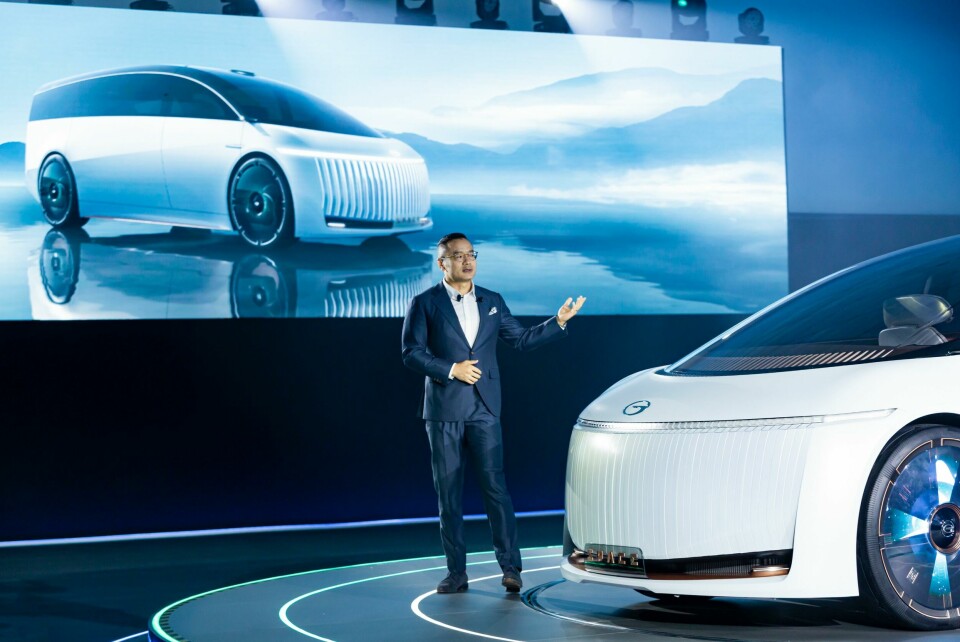
Smooth-faced EVs have quickly become familiar. But powered by a hydrogen fuel cell, which is packaged differently to a battery electric powertrain, the Space concept carries a heavily vented front grille that drapes across its face like a curtain. A thin black and bronze accent adorns the lower mask, with a prominent ‘SPACE’ badge mounted on a glass plaque at the centre.
The cowl is pushed forward into a exceptionally short hood, just large enough to carry GAC’s familiar ‘G’ emblem. A cavernous greenhouse sweeps from front to back before plunging toward the rear bumper, creating a boxy overhang. The roofline finishes with a slight upwards flick, inspired by the upturned eaves typical of traditional Chinese architecture, while vertical bars underneath reflect the ‘Illuminated Waterfall’ design language created by the grille at the front of the car.
The shoulder line runs at a slight angle down from the front fender, cutting into the top portion of the rear wheel arch. It gives the appearance of a stubby cockpit and a cavernous passenger compartment. Conventional wing mirrors make way for antenna-like side cameras, further streamlining an already sleek exterior.
The Space Concept comes from the mind of GAC design head Fan Zhang, whose previous concepts include a ‘liveable’ city car and the striking Enpulse roadster, which was developed by the OEM’s Los Angeles studio and shown in 2020. This time the package is a little more restrained – at least on the exterior. Inside is a radical redesign of seating arrangements and furnishings. “While the keyword of the exterior is hi-tech, the interior is all about the culture,” says Zhang.
”For the exterior, the Space features a clean body surface sculpted with light and shadow, creating a large space and a sense of potential energy,” he tells Car Design News. “On the interior, the layout itakes inspiration from the Chinese culture of “family reunion sitting around the bonfire” and typical oriental lifestyles to convey cultural confidence and create a better mobility life.”
The tail is tilted back slightly, and the visual effect is quite unique
Access is granted by an imposing gullwing door that rises high above the roofline, complete with spotlights that illuminate the cabin and cast a shadow over the attractive ridged door card on display. Indeed, a heavy focus has been placed on the interior, where all manner of changes are afoot. It is also a fitting name for a vehicle as cavernous as this. The cabin is so open in fact that it effectively boasts a corridor between the front and rear rows of seating.
There is no centre console splitting the front passengers, and the cockpit looks more akin to a boutique hotel foyer than it does a car, with seating laid out across a flat floor. Conventional bench seating has been swapped out for an L-shaped sofa and armchair arrangement, with the front seats swivelling to face those sitting behind. Perhaps fittingly, the design team has come up with different modes to bring passengers together, including Bonfire Circle mode and Tea Time Lounge mode.
Decorative wood-effect strips sweep from behind the rear bench and along the roof to the front of the cabin, which again might be more likely in a boho-style restaurant than a car interior. A ‘dome light’ behind these strips aims to replicate a cloud above the passengers. Then there is the boot, which houses a fold-out sofa and harks back to the rear-facing ‘jump seats’ of 1980s estates like the Mercedes W124 E-Class.
The emergence of digital surfaces is allowing the automotive industry to reconsider plain, upholstered surfaces for the interior. The Space Concept reflects this, using wraparound panels to display graphics of famous Guangzhou landmarks like the Baiyun Mountain and Pearl River. Landscaping aside, the interior remains also functional and high-tech. A three-tier display system on the dash brings together a facial recognition display, a fabric touch display and a front IP display.
And as such a sprawling interior layout would suggest, the Space Concept is designed for Level 4 autonomous driving, which allows for hands-off, eyes-off driving in most situations. When activated, the steering wheel and facial recognition display fold up and retract. It certainly all comes together for a laid-back environment.
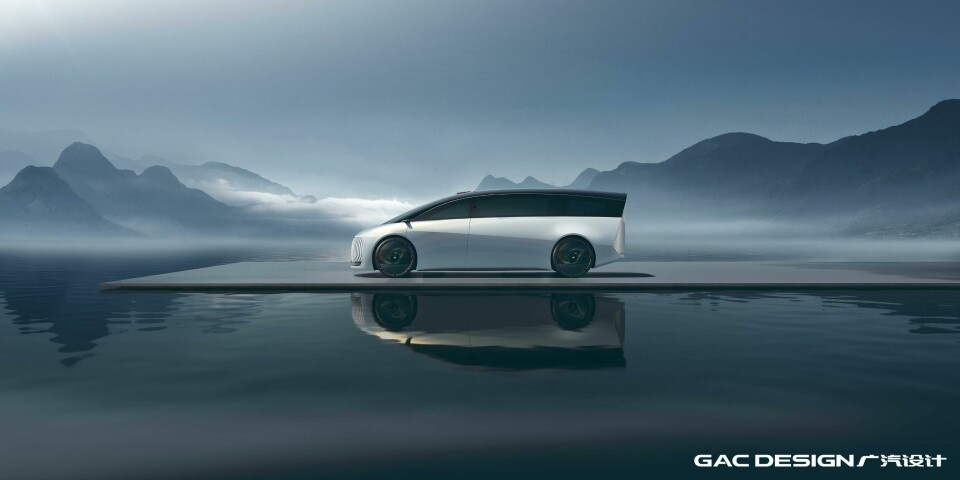
Unveiled on 28 June at its dedicated Tech Day in Guangzhou, Zhang says the Space Concept “represents a leap forward in GAC’s innovation and exploration,” suggesting that culture will begin to heavily influence on vehicle design more generally in future. In this case, it is about the “the application of Chinese aesthetics in modern design,” he explains.
”We wanted to show a futuristic and more integrated visual proportions with shorter front overhangs as well as a more sloping windshield and front profile. The tail is tilted back slightly, and the visual effect is quite unique,” Zhang told CDN. ”In order to show a stronger sense of luxury and majesty, we lengthened the rear overhangs moderately and solved the problem of hydrogen tanks encroaching on the trunk space, thus ensuring enough space for the mode of Tea Time Lounge. We created the car with a shorter front overhang and a longer rear, which is full of futuristic sense and proportional beauty and elegance.”
Certain elements carry over from the ‘Hi-Tech Industrial Aesthetics’ of the recently revealed Emkoo SUV, which also sports a ridged front grille, for example. However, as a vision of the future, the Space Concept ultimately represents a different direction for GAC’s design language.
